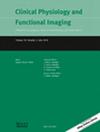Impact of blood flow restriction intensity on pain perception and muscle recovery post-eccentric exercise
Abstract
Background
Delayed onset muscle soreness (DOMS) is a well-established phenomenon characterized by ultrastructural muscle damage that typically develops following unfamiliar or high-intensity exercise. DOMS manifests with a constellation of symptoms, including muscle tenderness, stiffness, edema, mechanical hyperalgesia, and a reduced range of joint motion. In recent years, the application of blood flow restriction (BFR) has garnered attention for its potential impact on DOMS.
Objective
This study aimed to investigate the effects of different BFR intensities on biomechanical alterations induced by DOMS in healthy individuals.
Design and Methods
Thirty participants were split into two groups receiving either 80% or 20% BFR applied during low-intensity resistance exercise following DOMS induction. Pain perception, pressure pain threshold, muscle biometric characteristics, and strength were assessed before DOMS, after DOMS, and following BFR application at 24, 48, and 72 h.
Results
The 80% BFR group experienced faster reductions in pain perception compared to the 20% BFR group. Muscle strength recovery was also statistically faster in the 80% BFR group. No significant differences were observed between groups in muscle stiffness, flexibility, or other mechanical properties.
Conclusions
These findings suggest that BFR, particularly at higher intensities, may alleviate DOMS symptoms and accelerate muscle strength recovery. However, the lack of a control group and limitations in muscle property assessment warrant further research to definitively determine BFR's efficacy in managing DOMS.

 求助内容:
求助内容: 应助结果提醒方式:
应助结果提醒方式:


